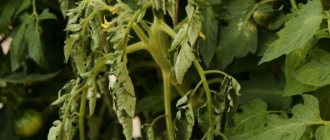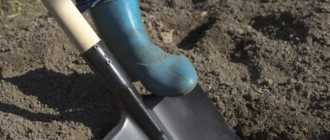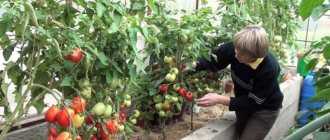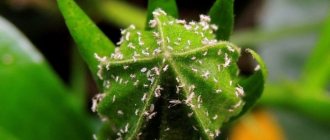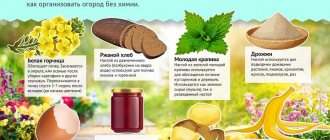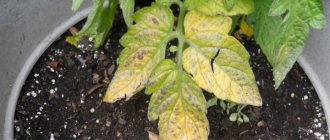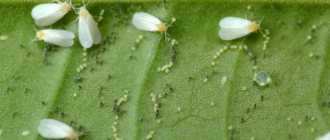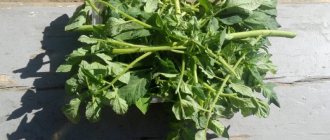How and why to water tomatoes with potassium permanganate
Professional vegetable growers water tomatoes with a solution of potassium permanganate. Indeed, such a remedy helps to effectively process the plant. However, before resorting to this method, you need to understand why to do this and how to properly prepare the solution.
Why water tomatoes with potassium permanganate?
When preparing to grow tomatoes, many gardeners reasonably wonder whether it is possible to spray or water the bushes with potassium permanganate. The product in question has many positive characteristics that affect the growth and development of the plant.
Among them are the following:
- antiseptic properties that help prevent the development of fungal diseases, including late blight;
- feeding the roots due to the creation of atomic oxygen in the soil;
- strengthening stems and leaves when spraying tops;
- preventing the entry of harmful microorganisms when pinching a bush.
Processing times and mode
You can treat tomatoes with potassium permanganate regardless of whether they grow in a greenhouse or in open soil
Procedures can be carried out throughout the life of the plant, but it is important to know when to stop. How often to process and in what mode to do it is determined depending on the stage at which the plant is currently located.
| Stage | Frequency and mode |
| Seeds before planting | Single soak |
| Seedling | 2 times - watering the soil with a break of 10 days, 1 time - spraying the bush |
| After landing | Watering - 1 time immediately after planting the seedlings in a permanent place, spraying - 2 times: with the beginning of flowering and 2 weeks before harvesting. |
Basic processing rules
The main rules for processing bushes and soil are:
- desired solution intensity;
- compliance with the norm in quantity;
- adherence to established deadlines.
How to prepare a solution of potassium permanganate for tomatoes
For use in the garden, 0.05%, 1% and 5% solutions are usually used, which are easy to prepare with your own hands.
Proportions and dosage
To prepare the solution you will need:
- clean water - 1 l;
- dry potassium permanganate - 0.5 g for 0.05%; 10 g for 1%; and 50 g for 5%.
Step-by-step cooking instructions
The drug is prepared as follows:
- Heat the water to a temperature of 40 °C.
- Enter potassium permanganate depending on the desired intensity.
- Stir until the water turns purple.
- Filter the solution.
Treatment with potassium permanganate
Potassium permanganate is used to disinfect seeds before sowing, seedlings in containers and tomatoes already planted in open soil.
Seeds before sowing
Disinfection of seeds should occur according to the following algorithm:
- Dilute the 1% solution in a small container.
- Place the seed in gauze or bandage and wrap it.
- Immerse the material with the seeds in a container with the solution.
- After 20 minutes, remove the gauze and rinse under running water.
- Leave the seeds until completely dry.
Seedlings
Seedlings should be treated by watering and spraying. Water the soil with a solution of 0.05%. The procedure should be repeated twice, 10 days should pass between each watering. Spraying is carried out with an intensity of 5%. It must be one-time only. To do this, pour the drug into a spray bottle and generously treat the tops.
Ripening tomatoes
Immediately after planting, it is necessary to water the soil with 10 liters of 0.05% solution. This will allow you to feed the plant’s root system with the necessary microelements.
During flowering, it is important to spray the bush with 5% of the drug. The procedure should be carried out after fertilizers have been applied to the soil.
The last time the tops should be sprayed with a 5% solution 2 weeks before harvesting ripe fruits. This is important due to the high activity of late blight and infection causing brown rot. Traditional methods involve adding 1 chopped head of garlic to 10 liters of product.
Useful tips
When starting to spray or water tomatoes, pay attention to the following recommendations:
- You can also treat containers with a solution of potassium permanganate before sowing seeds and picking them into separate containers;
- when choosing a regime of regular watering of the soil with potassium permanganate, the interval between procedures should be approximately 10–15 days;
- the use of the drug involves the use of protection for the skin of the hands and face.
Watering and treating tomato tops with potassium permanganate is useful and even necessary for preventing the development of various diseases and can be used as a top dressing. If you use the drug correctly and follow the required timing and doses, you will get a good and high-quality harvest from your tomato plant.
What are the benefits of using potassium permanganate
At the beginning of the season, gardeners think whether potassium permanganate can be used for spraying or watering crops. In fact, this product has many beneficial properties that affect the growth and proper formation of plants.
Let us highlight the main positive characteristics of manganese solution for the growth of tomatoes and cucumbers:
- the presence of disinfecting properties that help prevent the occurrence of parasitic diseases;
- nutrition of the root system of tomatoes by providing atomic oxygen in the soil layer;
- strengthening the plant by systematically spraying the foliage;
- there is no possibility of penetration of harmful organisms during the removal of additional tomato shoots.
Speaking about whether it is possible to water cucumbers with potassium permanganate, we can say “yes” with clear confidence.
This solution allows you to fight various plant diseases and strengthen the immunity of the vegetable plant. For example, by processing cucumber tops, diseases such as powdery mildew and late blight can be prevented.
Helping tomato seedlings not turn yellow
But if late blight is rampant in your area, then already at the beginning of June, the tomatoes need to be sprayed with iodine serum. The serum contains useful microelements and vitamin B, so it will provide both nutrition and prevention against such a dangerous disease.
But you shouldn't do this. Experienced gardeners, having tried many traditional methods, have learned to deal with tomato diseases without using chemicals that are harmful to humans. One such method is spraying tomatoes with iodine solution.
In hot summer weather, the best time to water is early in the morning or about two hours before sunset. At this time, the water will not evaporate immediately under the scorching rays of the sun, but will gradually be absorbed into the soil. In cloudy weather, you can water at any time of the day. And after watering, it is advisable to mulch the ground under the tomato bushes
- For this vegetable to develop normally, it is necessary to maintain soil moisture within 85-90%. To check the moisture, you can take a handful of soil from a depth of about 10 cm and squeeze it into a ball. If you get a lump, and when pressed it easily disintegrates, then this is the necessary soil moisture for growing tomatoes.
- Potassium permanganate is not only a good fertilizer for tomatoes, because it contains manganese and potassium, which are necessary for the nutrition of tomatoes, but also an excellent disinfectant against fungal diseases.
It’s possible, potassium permanganate kills, if not all, then most of the pathogenic bacteria on tomatoes. You can simply water the tomatoes with a weak solution of potassium permanganate, but even better - water and spray all the tomato bushes.
Frequency of use
Treating tomatoes with a manganese solution is acceptable regardless of where they are grown. Healing sessions are carried out at any time of crop growth, but do not overdo it.
The frequency of procedures will depend on what stage of growth the plant is at, namely:
- seeds before planting - place them in the soaking solution once;
- seedlings - watering the soil twice with an interval of 10 days and spraying the bush once;
- plant after planting - water the soil once and two sprays in the first days of flowering and two weeks before vegetable harvest.
Help please. Why is a solution with potassium permanganate watered on plants? Thank you!!!
Ekaterina Belyaeva
In alkaline soils it is represented by compounds that are poorly accessible to plants. On such soils, there is a need to apply manganese fertilizers. The lack of this nutrient causes the leaves of beets to turn burgundy; in potatoes, the tissue between the leaf veins turns white, then brown spots appear, and the plants grow poorly. In fruit and berry crops, the leaves turn yellow at the edges and die. This element must be applied in microdoses in the form of foliar feeding (3 g of potassium permanganate per 10 liters of water). When spraying trees with Bordeaux mixture, you can add 20 g of manganese sulfate per 10 liters of solution. On loamy soils, it is recommended to add manganese sulfate in the amount of 5 g per 1 sq. m. m. Manganese is found in manure and wood ash. When disinfecting the soil under vegetable crops and feeding them, you need to follow the dosage. The soil in boxes or cups for vegetable seedlings is watered with a solution of 5 g of potassium permanganate in 10 liters of water. Feed with a pink solution once every 10 days. A liter of warm solution of 2 g of potassium permanganate per 10 liters of water is poured into the holes for planting seedlings of nightshades, cucumbers, zucchini, and squash. At the first signs of fusarium (jaundice) disease in cabbage, radishes, radishes, the soil in the garden bed is disinfected with a solution of 3 g of potassium permanganate per 10 liters of water. For late blight of potatoes, preventive spraying of tubers is used with a solution of 10 g of potassium permanganate and 2 g of copper sulfate per 10 liters of water. The development of powdery mildew on currants can be stopped by spraying the bushes with a solution of 50 g of potassium nitrate with the addition of 3 g of potassium permanganate per 10 liters of water. Strawberries and soil from gray rot are sprayed with a pink solution of potassium permanganate until flower stalks appear. The second time - with a raspberry-colored solution after the peduncles extend, and the third time - on the young ovaries of the berries.
I. S. Starygin, agronomist
Potassium permanganate contains elements that promote plant growth - manganese and potassium. If you soak the seeds in a solution of potassium permanganate before sowing, this will not only disinfect them, not only destroy pathogens, but also provide a starting supply of manganese. As a result, you can get rich and environmentally friendly products.
In the manuals for gardeners, it is said about potassium permanganate: “A microfertilizer containing manganese is intended for soaking seeds in order to disinfect and reduce plant diseases caused by infections and a lack of manganese-chlorosis on neutral, alkaline and highly calcareous soils. Plants particularly affected by manganese deficiency include beets, potatoes, cucumbers, cabbage, beans, peaches, cherries, plums, apricots, apples and raspberries."
Potassium permanganate gained the greatest popularity when processing tomato seeds. For 20 minutes, the seeds are soaked in a 0.5% solution of potassium permanganate (0.5 g per 100 ml of water), then thoroughly washed with water and dried.
Onion sets, cabbage seeds, radishes and many annual and perennial flowers are processed in the same way. By the way, the use of potassium permanganate often allows you to do without fungicides.
Bulat Gainullin
A weak solution of potassium permanganate is used mainly to water the seedlings. This protects the plant from pests and disinfects the soil.
Alexey Turtygin
potassium permanganate serves for decontamination. The beds are watered with a weak solution for sowing and planting seedlings, and the seeds are also soaked in it. but to water the cucumbers and tomatoes. they'll just burn out.
Nadezhda Kotsareva
Well, you are gardeners! Potassium permanganate for pests ???Potassium permanganate is used for disinfection against fungal and bacterial diseases on the surface of seeds. Or to disinfect the soil also against infection in the soil!
Caring for plants in the ground
Preventive wetting of leaves with permanganate is carried out in the open air and protected ground. It is enough to treat tomatoes three times during the growing season to avoid dangerous diseases.
Processing time:
- 5 days after planting seedlings;
- in June, when the first flowering ovaries appear;
- and July-August to protect against late blight.
Processing technology:
- 1 g of substance is diluted in 10 liters of water,
- 0.5 l is poured under the root of each bush,
- The remains are poured into a sprayer and the leaves are treated, trying to get on each one.
Potassium permanganate acts by contact. To kill fungi and bacteria, it must hit them directly.
The event is held in cloudy weather or early in the morning. In the sun, the leaves will become covered with burns and specks, which will become a gateway for infection.
Zinc for tomatoes
Zinc plays an important role in the development of tomatoes.
This element ensures active growth of the crop, increases yield, promotes the formation of large fruits and their early ripening, and increases the content of vitamin C in fruits.
Zinc increases the resistance of plants to unfavorable conditions and diseases, and with its deficiency they become significantly weaker. Therefore, at the first signs of deficiency, it is worth watering or spraying the plant with this microelement.
Signs of shortage
Zinc deficiency occurs primarily in sandy and gravelly soils. If there is a lack of it, first on the lower leaves, and then on the upper ones, bronze-colored spots form. Then the leaves dry out and fall off. New leaves grow small and have yellow spots. The stems of the plant become thinner and become woody.
How to fertilize
A zinc solution can be used for root feeding, as well as spraying of tomatoes, and the solution should fall on both the upper and lower parts of the leaves.
How to use zinc sulfate?
Zinc sulfate is used in the initial stage of crop development and during the fruiting period. This element must be used on slightly acidic as well as neutral soils.
For tomatoes, a solution of zinc sulfate (10-15 g of the substance per 10 liters of water) is used as foliar feeding. Consumption – 1 liter of solution per 10 m2.
Fertilizers with this microelement
For tomatoes, spraying with a micro-nutrient foliar solution that contains zinc is used.
There is no need to be afraid of an overdose, since plants are not afraid of high levels of this element.
Foliar sprays completely provide the crop with zinc, but do not solve the problem with the soil.
Microfertilizer with zinc of the Malham brand increases yield and improves the quality of fruits. Used as a crop spray (100 ml of fertilizer per 10 liters of water).
Fertilizer "Sivid - Zn" increases the yield and resistance of tomatoes to diseases. A solution (2-3 g per 10 liters of water) is used for root feeding (4-10 liters per m2), as well as for foliar feeding (1-1.5 liters per 10 m2).
Rules for watering and spraying
To apply root fertilizers, it is necessary to use a solution of zinc sulfate (5 g of substance per 10 liters of water).
To spray tomatoes, use a zinc solution of 10 g of the substance per 10 liters of water. Don’t forget, you can’t spray tomatoes in a greenhouse often, otherwise you can provoke the appearance of mold and fungal diseases.
Foliar feeding of tomatoes is effective at low air temperatures and poorly developed roots with the following solution:
- 1 liter of water;
- 1 g boric acid;
- 1 g manganese sulfate;
- 0.2 g zinc sulfate;
- 0.2 g copper sulfate;
- 0.2 g cobalt sulfite;
- 0.1 g ammonium molybdate.
Add 10 g of the prepared solution to 10 liters of water and spray the plants (3 liters per 10 m2). Apply once a month.
Properties
Potassium permanganate is a strong antiseptic. By attaching oxygen molecules to itself, it destroys pathogens of infectious diseases.
Permanganate contains microelements valuable for tomatoes - potassium and manganese. Both substances are present in the soil, but their additional application is very useful at certain stages of development of tomato plants. The combination of two beneficial substances and antibacterial activity make potassium permanganate an almost indispensable preparation for growing tomatoes in a greenhouse and open ground.
Growing tomato seedlings
I grow tomato seedlings on windowsills. Since the fall I have been preparing a nutritious mixture. For 1 bucket of garden soil I give 1/2 a bucket of humus, which crumbles in your hands like peat, on January 4, buckets of river sand, 1.4 buckets of well-settled peat and 4 cups of ash. I mix everything thoroughly and pour it into boxes, on the bottom of which I evenly lay out broken bricks and stones. I carefully level the ground in the box, after which I draw lines along and across with a ruler in such a way as to obtain squares of 15 mm2. I place one seed at the intersection of the furrows. I sow to a depth of 0.6 -1 cm. I water the soil for tomato seedlings with warm water and potassium permanganate.
Shoots appear on the 5-7th day. I water the seedlings every 2-3 days. In the phase of formed two leaves (about a month after sowing), I pick (transplant) the seedlings. I throw away weak plants. I make dives in the same boxes and sow the seeds, but now the distance between the plants is 5-6 cm. They can be replanted in paper cups made from newsprint (the volume of a 250-400 gram jar).
With the onset of warm days, I put the boxes with seedlings on the balcony for hardening. For the first 2 days I keep it in the air for no more than 20 minutes, and then daily I increase the time by 10-20 minutes until the plants take on a bluish tint. I water it 1-2 times a week. If you do this more often, the seedlings will stretch.
Do I need to till the soil and greenhouse?
No matter how carefully gardeners handle tomatoes, no matter what means they are processed, fed, the presence of pests and disease spores in the soil, on the walls of the greenhouse, all efforts can be reduced to zero. You don’t even have to think about any rich harvest.
Potassium permanganate is appreciated not only by amateur gardeners. Its unique antiseptic properties are recognized by scientists and agronomists. Pest and disease control must be carried out not only before sowing seeds and during the cultivation of tomato seedlings, but also when preparing the soil.
It is no secret that even frost does not kill fungal spores in the soil and on the surface of the greenhouse. Potassium permanganate can be used as preventive measures. You will need a saturated solution to treat the walls and ceiling of the greenhouse. Potassium permanganate is diluted in almost boiling water and sprayed over the entire surface of the greenhouse, not bypassing any cracks. Immediately pour the hot pink solution onto the soil. After this, the greenhouse is tightly closed.
During the summer, you need to spray the outside of the greenhouse with a saturated solution of potassium permanganate, the path in the greenhouse itself and in front of the entrance. This preventive measure is necessary to destroy disease spores that get inside the shoes.
If tomatoes are grown in open ground, then the soil is also spilled with boiling water and potassium permanganate before planting.
How to treat tomatoes with potassium permanganate against late blight
Most often, a solution of potassium manganese of rich pink or crimson color is used to process tomatoes. It is used both as a prophylactic and for the treatment of tomatoes in the initial stage of the disease. As a rule, only the concentration of the solution and the frequency of its use differ.
Recipes for solutions with potassium permanganate
To combat lesions, a solution of potassium permanganate is most often used at the rate of 3 grams of manganese potassium per 1 liter of water. Since weighing such an amount of powder is quite problematic, the concentration is usually determined by eye. Tomatoes are sprayed with a bright crimson solution. But there are also complex recipes with several components:
- A daily infusion of garlic feathers is prepared at the rate of 100 grams of garlic per 1 glass of water. Add 1 gram of potassium manganese. Before use, the infusion is diluted in 10 liters of water.
- For 10 liters of water take 3 grams of potassium permanganate and a teaspoon of boric acid.
- Or add a teaspoon of boric acid and 10 drops of iodine to 10 liters of a raspberry-colored potassium permanganate solution.
Such remedies help to cope well in the initial stages of the disease. To increase efficiency, experienced gardeners recommend adding liquid soap or a small amount of grated laundry soap. It will help the ingredients stay on the leaves and stems of the plants being treated, and prolong the healing effect of potassium permanganate.
Attention!
If the potassium permanganate solution turns out purple, or undissolved potassium manganese crystals are visible in it, then tomatoes cannot be treated with it. There is a high risk of causing burns to the leaves and only worsening the condition of the tomato.
How to breed correctly
There are no special rules for preparing a solution of potassium manganese to combat late blight. As a rule, crystals are diluted with water at room temperature. When preparing a large amount of the remedy, it is better to dilute potassium permanganate in 1-2 liters of water, and then gradually add the required amount of liquid. This will prevent undissolved crystals from settling to the bottom of the container.
Gardeners often believe that an aqueous solution of potassium permanganate can be stored for a long time without losing its antiseptic qualities. This is wrong. Potassium manganese solution should be stored in a dark and cool place for 2 days. If a product is prepared to process tomatoes using additional ingredients, it is best to use it on the day of preparation.
Processing rules
In open ground, tomatoes are processed in dry and windless weather. It is advisable that there is no precipitation in the next 24 hours. In greenhouses, weather conditions do not play a big role. It is better to carry out processing in the early morning hours or after sunset, so as not to cause burns to the tomato leaves.
When treating tomatoes for late blight with a solution of potassium permanganate, carefully treat the outer and back sides of the leaf blades, as well as the set fruits. As a rule, a spray bottle is used for processing. It is also recommended to spill the soil in the root circle with the prepared product.
Treatment of tomatoes with a solution of potassium manganese can be carried out at intervals of 10-14 days, until the symptoms of late blight completely disappear.
Attention!
Before treating plants with potassium permanganate against late blight, tomatoes are carefully inspected. If necessary, remove all leaves, shoots and fruits affected by the disease. The use of potassium permanganate does not harm the human body
The exception is individual intolerance to the components. In this case, you need to use gloves and personal respiratory protection.
The use of potassium permanganate does not harm the human body. The exception is individual intolerance to the components. In this case, you need to use gloves and personal respiratory protection.
Treatment for preventive purposes
Potassium permanganate has proven itself as a preventative against tomato late blight. In this case, use a solution prepared at the rate of 1 gram of potassium manganese per 10 liters of water or a pink solution of potassium permanganate. The seeds are soaked in it before planting.
Tomatoes are treated with it at least 3 times during the growing season. The seedlings are sprayed for the first time, potassium permanganate is used for the second time 2-3 weeks after transplantation, and the third time at the end of June. The use of potassium permanganate in the future depends on weather conditions.
Using manganese solution
Treating tomatoes with a solution of potassium permanganate is the best thing you can think of. The cost of such a product is low, but despite this, it allows you to prevent a large number of tomato diseases.
Advantages of using manganese solution:
- Due to the fact that this product is considered an antiseptic, it is ideal for disinfecting crops. That is, the leaves and soil completely get rid of all negative bacteria that can have a bad effect on the plant. But it should be noted that there is a disadvantage of this method. The whole point is that the positive microflora of the soil is destroyed.
- As soon as the product enters the substrate, a chemical reaction occurs. As a result, an oxygen atom begins to be released. Once it interacts with the soil, ions are formed. It is the ions that have a positive effect on the roots of the plant.
- If the crop is sprayed with such a pharmaceutical product, then this has a positive effect on the tops of the plant - they become stronger and more beautiful in appearance.
- Potassium permanganate is used to fertilize the soil and disinfect the plant.
- After pinching, manganese allows all wounds and cracks on the tomatoes to heal. This reduces the risk of infection.
Tatyana Orlova (candidate of agricultural sciences):
The full name of potassium permanganate is potassium permanganate. This chemical contains the elements manganese and potassium necessary for plants.
Should tomato seedlings be watered or sprayed with EPIN? If you can water it, how much should you pour the finished solution?
ღ•M@rin@•ღ
Before the first true leaf appears, the supply of moisture in the soil must be constant. Therefore, it is best to place the boxes with tomato seedlings in trays and add water there as needed. It is best to water the seedlings in the morning with warm, settled water. Watering with snow or rain water is very useful. As an option, you can water it after defrosting the ice from the refrigerator. Water the tomato seedlings with so-called “living” water, which is prepared in a special way. Water is poured into the pan after the ice has melted, heated until hot (until steam appears), covered with a lid and quickly cooled under running cold water to a temperature of approximately 25°C. Now you can water your seedlings.
BASTETA (TANK of Legends)
If at the beginning of summer you can water plants with a pale solution of potassium permanganate for feeding, then with the onset of low night temperatures and the appearance of dew in August, it is good to carry out preventive spraying with the same solution of leaves, fruits and stems of tomatoes.
Adelaide Markoffеva
Dilute potassium permanganate with water and make a solution so that it is light crimson in color. We spray the tomatoes with this solution in the evening when there is no rain.
Mityai Bukhankin
on a tomato you can use a stimulant before transplanting so that stress can be easily tolerated. A plant that is fertilized and watered on time does not need a stimulant and is not afraid of diseases.The seedlings are alive and well, and are they not getting sick? Then there is no need to just spray it. The drug is used in the following cases: spraying with Epin-extra solution (5-6 drops per 0.5 liters of water) in the phase of 2-3 true leaves and on the eve of transplantation, as well as under stressful growing conditions (lack of light, frost, onset of diseases, and etc.) spraying is carried out every 7-10 days until the plants recover.
Olga
One of the reasons for this, as I noticed, may be that you bought unhardened seedlings grown in greenhouse conditions and planted them immediately in open ground. It was probably intended for a greenhouse, but you were not warned. Unhardened seedlings with the first rays of sun or morning cold begin to turn yellow and die. Immediately bring it into the greenhouse or room, and gradually fill it in for open ground.
Seed treatment
For better germination of seeds, they are poured with hot water for a day, then kept for 20 minutes. in a solution of potassium permanganate. This procedure will add stamina to them and protect them from the development of many diseases. Potassium permanganate contains microelements that will nourish the seeds and make them strong and durable. The likelihood of their germination and good growth will increase, which will have a positive effect on the future harvest.
Preparing seedlings
How often to water tomato seedlings on the windowsill
You cannot keep the seeds in the solution for longer than this time. This can reduce seed germination and impair their development.
Important! When treated with manganese, microorganisms that are on the surface of the grain die. The solution has no effect on internal seed infection.
Foliar feeding of tomatoes
Tomatoes always require foliar feeding. It is very easy to prepare; just take 40 grams of potassium chloride. 15 grams of ammonium nitrate and 60 grams of superphosphate are all carefully exchanged in 10 liters of water and the plants are sprayed with this mixture. But it is worth keeping in mind that such spraying must be carried out before the first fruits begin to appear.
Feeding tomatoes (tomatoes) with superphosphate
Carry out taking into account weather conditions. In cold weather, nutrients are very poorly absorbed. Also, you should not fertilize if the soil of the tomatoes is dry, otherwise the plants will not receive the vitamins with which you want to enrich them at the time of fertilizing.
Feeding tomatoes (tomatoes) after planting
After you have planted tomato seedlings, they need careful care so that they take root in their new place. To do this, be sure to take care during planting not to damage the seedlings themselves. But of course you shouldn’t forget about feeding. To help seedlings take root in a new place, you need to add more phosphorus to the soil. Potassium and other trace elements.
Any phosphorus fertilizers always increase plants' resistance to cold. At the moment when they lack phosphorus, this can be seen in their general condition. At this point, the leaves and stem of the tomatoes will begin to turn purple. If this happens, you should not resort to extreme measures and start thoughtlessly applying all kinds of fertilizers. To begin with, you can use available methods. For example, nettle.
Feeding tomatoes with nettles
Saturates tomatoes with all necessary microelements and enriches them with vitamins. In order to prepare such a fertilizer, you will need young nettle (preferably), finely chopped and filled with water in a ratio of 1:3, then all this is infused for one week and you can water your tomatoes. You can do this watering once a week throughout the entire season; there will be no negative consequences from this; everything will only be beneficial.
Fertilizing tomatoes with potassium permanganate is carried out only during the flowering period and only once for this purpose the solution is prepared, thus, take 10 grams of potassium permanganate and dilute it in two liters of water. Watering should be moderate.
Of course, feeding and fertilizing is good, but you should always remember that moderation is always needed everywhere and always. But what if this suddenly happened? If you have overfed your plants, then try to immediately fill your beds with plenty of water, about one bucket per bush. This is best done in hot, hot weather. You can also leave several stepsons to quickly remove excess fertilizer. In order for the plant to begin to form fruits and not tops, you need to tear off several lower leaves
Use compost and vermicompost carefully in fertilizers, as an excess of them will have a very bad effect not only on the plants themselves. But also on their fruits
In this case, the plants will begin to grow actively, or rather their leaves will grow, but there will be very few fruits and they will all be weak and small.
Thus, knowing all these simple subtleties, with the correct use of fertilizers, you can always get a high-quality harvest. Be sure to tie up your tomatoes, even if they are short-growing, because in strong winds they may fall. But tall varieties need to be tied, preferably in two places above and slightly below. You shouldn’t tie it too tightly to the stakes. It is enough to tie it lightly so that the stems feel free and can actively grow and develop throughout the season. It is advisable, if possible, to plant different varieties of tomatoes separately from each other and try not to mix them. Harvesting should be done before frost, otherwise with a slight frost the entire crop will be completely spoiled.
stroi-rasti.ru
Soaking seeds in water
If you sow the seeds dry, there is a chance that you will not see shoots. Therefore, in order to speed up the germination of seeds, they must be soaked in water before sowing. (If the water is warm, germination energy will increase.)
However, you need to know when to stop everything. So, the seeds of parsley, onions and carrots are soaked for 1 day; pumpkins, zucchini and cucumbers - 12 hours, beans and peas - 4 hours. To ensure that the seeds have enough oxygen, it is important not to overexpose them to water. They should not be completely wet; it is generally better to wrap them in a damp cloth. And sow only in moist soil.
Pros and cons
Like any other remedy, potassium permanganate has its pros and cons. The advantages include:
- ease of use;
- good disinfectant effect (the drug is effective for both prevention and treatment of diseases);
- When it is used, plants are fed.
Disadvantages of the product:
- today it is not available everywhere;
- there are modern, more effective substances;
- not effective against pests;
- in some cases it can harm seedlings.
In order for potassium permanganate to bring only benefits and not harm, it must be used correctly. This is very simple to do: follow the proportions and do not water the seedlings with a dark purple solution. You also need to stir thoroughly until the crystals dissolve completely.
Although the solution is non-toxic, it is better to use it with gloves. Sometimes there is an individual intolerance to the drug, so it is better not to get it on the skin. We must try to ensure that the entire earth is saturated, but without excess.
Manganese solution is a time-tested remedy that is successfully used for growing seedlings. When used carefully and in moderation, it promotes the growth of good seedlings that will produce a corresponding harvest in the future.
Fans of gardening should remember this effective substance. Moreover, it can be useful not only for processing seedlings. When irrigated, potassium permanganate has a positive effect on a wide variety of crops.
Sticking seeds on paper tapes
Paper tapes made of filter paper are used, the seeds are pre-calibrated. Glue the seeds to the required distance using starch or flour paste, sodium CMC adhesive, EPOS. The seeds are glued in advance, possibly several months before sowing. Tapes with glued seeds are rolled up and stored in a cool, dry place.
When purchasing seeds for your garden, be sure to take into account the packaging time and storage time of the seeds, since these indicators are very important for obtaining good germination and a good harvest in your beds.
Potassium permanganate for plants: use in the garden, vegetable garden, for indoor crops
In order not to once again flood plants whose fruits are used for your own needs with chemicals, you can use potassium permanganate or potassium permanganate, sold in a pharmacy.
The solution is strong enough to eliminate fungal spores from growers' tools, or greenhouse interiors, or even in the soil. This substance is used at all stages of excavation work - from soaking the seeds to the moment of harvesting and after it - in the fall.
Potassium permanganate for plants is both a medicine, a fertilizer, and an antiseptic. But it must be applied based on the task at hand. The strength of the solution for seeds and for wiping tools will be different - if you mix up the concentrations, the plants will get foliage burns.
Treatment of tools with manganese
Methods of using potassium permanganate in the garden are not limited to watering. Before planting seeds in pots or plastic containers, they must be disinfected with a strong solution of manganese.
This will help the seedlings grow better rather than wasting energy fighting bacteria or fungi. If the same container is used from year to year, then it probably contains various parasites that will interfere with the growth of young seedlings.
Garden tools can also be processed:
- boxes for collecting fruits and roots.
A strong solution is also needed here. It is usually poured into a container and the tools are left for several hours.
Tools that are used for pruning fruit trees - knives, pruners, saws - are treated with potassium permanganate so as not to transfer fungal spores from one tree to another. This is especially true for bushes and trees where there was an outbreak of any disease, and it was necessary to trim off the damaged branches and then burn them.
The disinfection procedure is carried out after harvesting, before sending working tools for storage in a barn or storage room.
Cleaning procedure:
- All tools are first cleaned of soil and plant residues.
- Using a rag, wash the working surfaces with the solution.
- Soak for 3–4 hours .
- Dry in the sun until the liquid evaporates completely.
- Iron parts are lubricated with technical oil to prevent rust.
Boxes for storing vegetables are sprayed with a spray bottle and dried in the shade. Then you can store the harvested crops in them and send them to the cellar.
The basement can also be prepared for winter using manganese, especially if it is damp and mold periodically grows there. Disinfect the walls, ceiling, floor, steps and handrails. To do this, use a sprayer and a rag. When working with a concentrated solution, you need to wear gloves and cover your respiratory system.
The inside walls of the greenhouse are treated in a similar way, since when the doors are closed, spores and bacteria settle and multiply on them. For tall greenhouses, it is better to use a spray bottle with a long handle.
When planting indoor plants, pots and a soil scoop are washed with a pink solution. If the soil for indoor flowers is taken from the garden, then it is spilled with potassium permanganate before planting.
Important! The concentration for treating tools and premises should be as follows: take 10 g of the substance per bucket of water and stir well
The use of potassium permanganate for plants
At the stage of growing tomato, cucumber, and cabbage seedlings, the seeds are pre-soaked in a weak pink solution. The concentration is 0.5%, that is, for 100 ml of water you need half a gram of potassium permanganate. The seeds are placed in cotton cloth and dipped in liquid for 30 minutes. No longer recommended as seed material may be damaged.
In a 1% solution, the seeds of tomatoes, legumes, celery, corn, and onions can be kept for up to 45 minutes. This increases germination. The seed material of eggplants, peppers, pumpkins, and dill is kept in 2% liquid for 20 minutes. The shell becomes looser, so seedlings appear faster.
The main thing is not to exceed the concentration and exposure time. If the seed material is kept longer than expected, it may turn black and all the hairs that attract nutrients from the soil will burn. Such seeds will not sprout, and if they sprout, the seedlings will be weak.
Manganese for plants is used when preparing soil for planting seeds. The procedure is called etching. Take 0.5 g of potassium permanganate per 1 liter of water and water the soil before planting seeds in it. The temperature of the solution should be above 60 degrees. In this way the following diseases can be eliminated:
: Benefits of potassium permanganate for plants, seeds and soil
After picking, the seedlings are planted in open ground. While inspecting the root system, remove the damaged parts and cauterize them with a solution so that the plants do not get sick when planted in the soil. To do this, stir 2 g of crystals in a liter of water, after removal, leave the plant in the container for half an hour for disinfection. Then you can plant it in the ground.
Spraying with pink solution
The active substances - manganese and potassium - help not only in the fight against infection. They are nutrients without which plants do not develop well. This is especially true for the lack of potassium, which is responsible for the quality and quantity of fruits.
Without potassium, nitrogen is poorly absorbed in tissues, and leaves begin to dry out and fall off. Buds and ovaries are especially sensitive to potassium deficiency. In fruit crops, deficiency causes the ovaries to fall off, which affects the amount of harvest. Urgent feeding can be organized by spraying the plants with a solution of potassium permanganate - 3 g of the substance per bucket of water.
Manganese also takes part in metabolism. With sufficient quantities, the processes of photosynthesis and respiration proceed normally, and crops are able to withstand diseases and bad weather conditions. The absorption of carbon dioxide depends entirely on the presence of the microelement manganese in the soil.
Fertilizing with potassium permanganate is carried out both by root and foliar methods. The foliar method delivers nutrition to the leaves faster. While mineral or organic fertilizers are decomposed in the soil by microorganisms so that the roots can absorb them and deliver them higher, the solution on the leaves is already working, the plants come to their senses and then develop normally.
In acidic soils there is likely to be an excess of manganese, so it must be applied with caution. It is advisable to first find out whether the pH in the garden bed is too low. This can be done using litmus paper purchased at a gardening store.
Is it possible to water cucumbers with potassium permanganate?
To combat diseases, it is advisable to combine the pink solution with other pharmaceutical drugs - hydrogen peroxide, boric acid, brilliant green. Or use herbal additives when preparing a natural fungicide - for example, garlic.
Fertilizing cucumbers with potassium permanganate is carried out 2 times per season. You can use the following recipes to choose from:
- 3 g of substance per 10 liters of water. Spray the tops and soil under cucumbers. Carry out 2 – 3 sprayings with an interval of 3 days. This recipe is suitable for combating powdery mildew.
- Against late blight, you need to make a solution of 1 g/10 l and add chopped garlic - 1 cup, passed through a meat grinder or blender. Spray the plants at intervals of 10 days.
The sooner procedures are started, the less likely it is that the disease will spread. The first plant on which signs of fungus appear should be removed by the roots and burned, and the soil should be spilled with a garlic-manganese solution. This recipe is suitable for tomatoes that are affected by late blight.
- For 3 g of permanganate, add 50 g of potassium nitrate and stir it all in a bucket of water. Powdery mildew stops reproducing after spraying with this composition.
Important! You need to monitor plants from the beginning of their growth in open ground in order to see in time where disputes are developing and take action.
Manganese against black leg in cabbage
Cabbage seedlings at high temperatures and humidity are susceptible to the fungal disease “blackleg”. Part of the shoot near the ground darkens and rots, the weak plant dies. To save, the soil from under the root is removed and replaced with sand or ash. The sand is spilled with a solution of potassium permanganate for disinfection.
Potato
When planting potatoes, sometimes the tubers are cut into two parts, each of which has an eye. To prevent the planting material from becoming infected or deteriorating, the knife is moistened in a manganese solution and the cut area is wiped with ash. Potassium permanganate is used for potatoes mixed with copper sulfate:
Substances are dissolved in a bucket of water. The quantity is enough to plant an entire garden - 10 kg requires 200 ml of liquid. Treat the tubers just before planting them in the ground. The same mixture can be used against potato late blight.
Important! Check the soil for acidity before using potassium permanganate
Strawberries or strawberries
Bushes are often attacked by the weevil, which damages the ovaries and flowers. The peculiarity of this insect is its constant migration across all types of garden crops, therefore, if a weevil appears, you need to fight it everywhere.
For the winter, it goes into the soil under the strawberries when the temperature drops to 8 degrees, before thoroughly undermining the plants. In the fall, it is recommended to water the soil with a manganese solution to destroy adult specimens burrowing into the ground.
Potassium permanganate for indoor flowers
Treatment is carried out in the spring, when the plants begin to wake up after the winter dormancy period. Use together with boric acid: 3 g of acid and potassium crystals per 10 liters of water. Spray or water the soil in pots. Small specimens are 0.5 liters each, large specimens are 0.5 liters each.
Manganese sulfate can also be used to set flower buds in pets.
If chlorosis between the veins is observed on the leaves of houseplants, this may indicate both a manganese deficiency and an iron deficiency. The symptoms are almost the same. It is accepted that for greater benefit you need to combine these two microelements, since they work in pairs, and only then are they beneficial.
Before planting, bulbous plants are soaked in a solution of boron and manganese to prevent fungus. Exposure time is 2 hours at a concentration of 0.1%.
The use of potassium permanganate for indoor plants is not limited to soil dressing and fertilizing. Against some pests - aphids, midges - use a weak solution plus laundry soap. It is necessary to wash the leaves from all sides, after covering the ground with polyethylene so that the liquid does not get into the ground. Then rinse with clean water.
conclusions
Manganese should be used carefully for plants and only at a neutral pH level. Do not exceed the dosage of the substance, so as not to harm the roots or spoil the planting material.
Source: https://udobreniya.net/margancovka-dlya-rastenij-primenenie/
